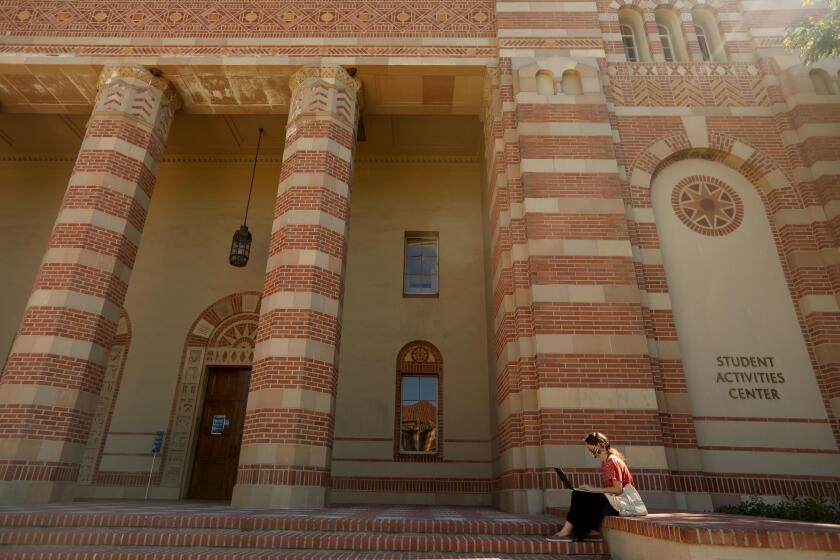Billions spent in U.S. on community college students who drop out
- Share via
California and other states are spending billions of tax dollars on community college students who drop out before completing their studies, according to a report released Thursday.
For the Record, 8:22 a.m. Oct. 20: The headline on an earlier version of this online article stated that “California spends billions on community college students who drop out.” Actually, the report cited in the article said billions were being spent across the United States; California’s expenditures over five years totaled $480 million.
The report by the nonprofit American Institutes for Research found that from 2004 to 2009, federal, state and local governments spent nearly $4 billion on full-time community college students who dropped out after their first year.
In California, expenditures on such students over the five-year period totaled $480 million, far more than any other state.
The report highlights a nationwide trend of increasing community college enrollment and spending but declining completion rates at the same time that state funding for higher education has dropped.
“These kinds of numbers say to states like California that our taxpayers are on the hook for substantial amounts of money and they are not getting an adequate amount of return,” said Mark Schneider, a vice president at the research center who wrote the report.
“Between legislators questioning where this money is going and consumers saying the success rates are too low, I believe we can actually build up some pressure for states to start taking action,” he said.
The report found that about a fifth of full-time U.S. community college students in the period studied did not return for their second year. In 2009, the most recent year for which data were available, about $1 billion was spent on students who dropped out, up 35% from 2004.
Eight states spent more than $25 million in 2009 on students who ultimately dropped out, with California topping the list at $100 million.
The figures include only full-time students and are adjusted to account for those who transferred to four-year universities. If part-time students were included, the costs would be higher, Schneider said.
The report did not study the reasons for the low rate of success but noted that many students are ill-prepared for college, receive too few support services and are not helped by remediation.
California’s 112 community colleges form the nation’s largest system of higher education with 2.6 million students.
On Wednesday, a state Senate subcommittee heard from a task force considering ways to improve student outcomes.
“We all would like to see the numbers vastly improve,” said task force chairman Peter MacDougall, a member of the California Community Colleges’ board of governors. “As a system, community colleges have done a tremendous job in providing access and now have to elevate the focus on success to a much higher level.”
Steve Boilard, director of higher education at the state Legislative Analyst’s Office, noted that even when students drop out, not all money spent on their education is necessarily wasted. But the report raises important questions about lost potential, he said.
“The hard job is not demonstrating that lots of community college students don’t achieve meaningful education goals, or that money is wasted; the hard part is changing those facts,” he said.
More to Read
Sign up for Essential California
The most important California stories and recommendations in your inbox every morning.
You may occasionally receive promotional content from the Los Angeles Times.











